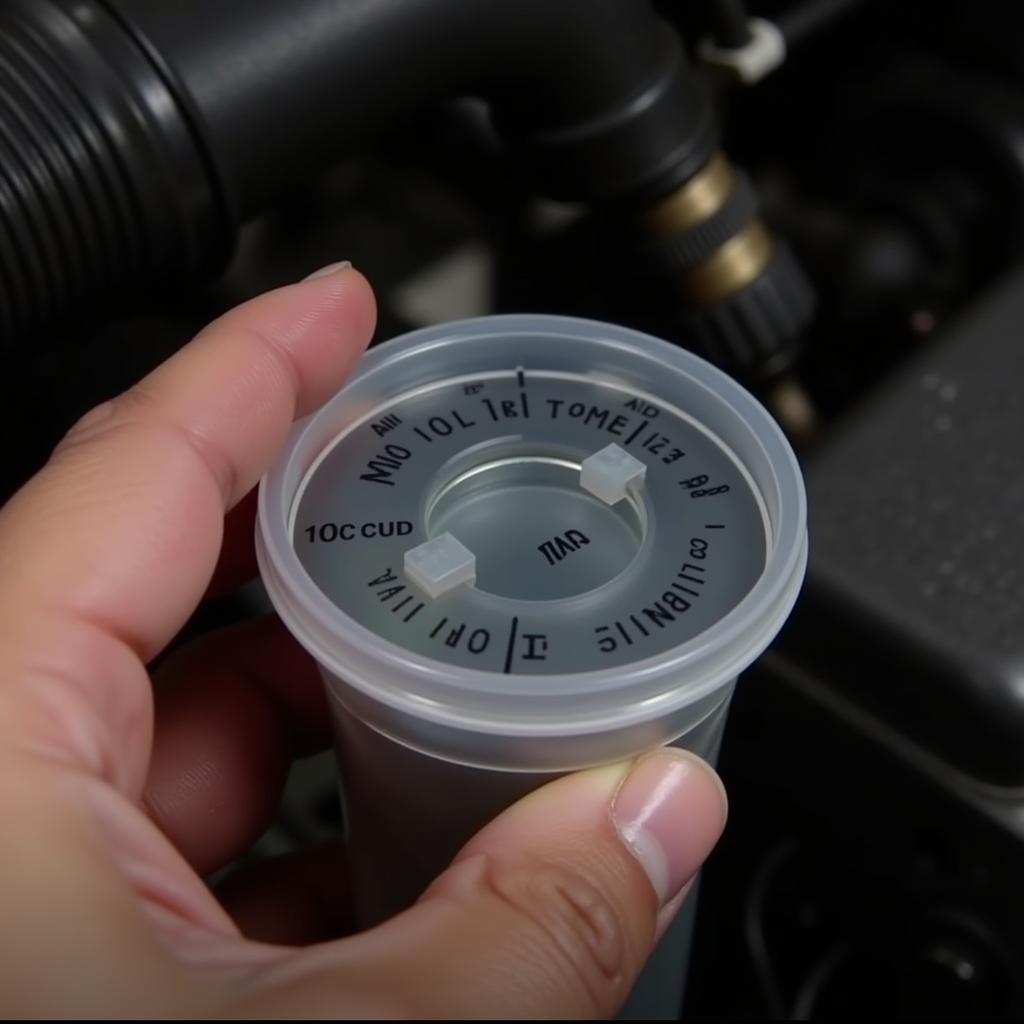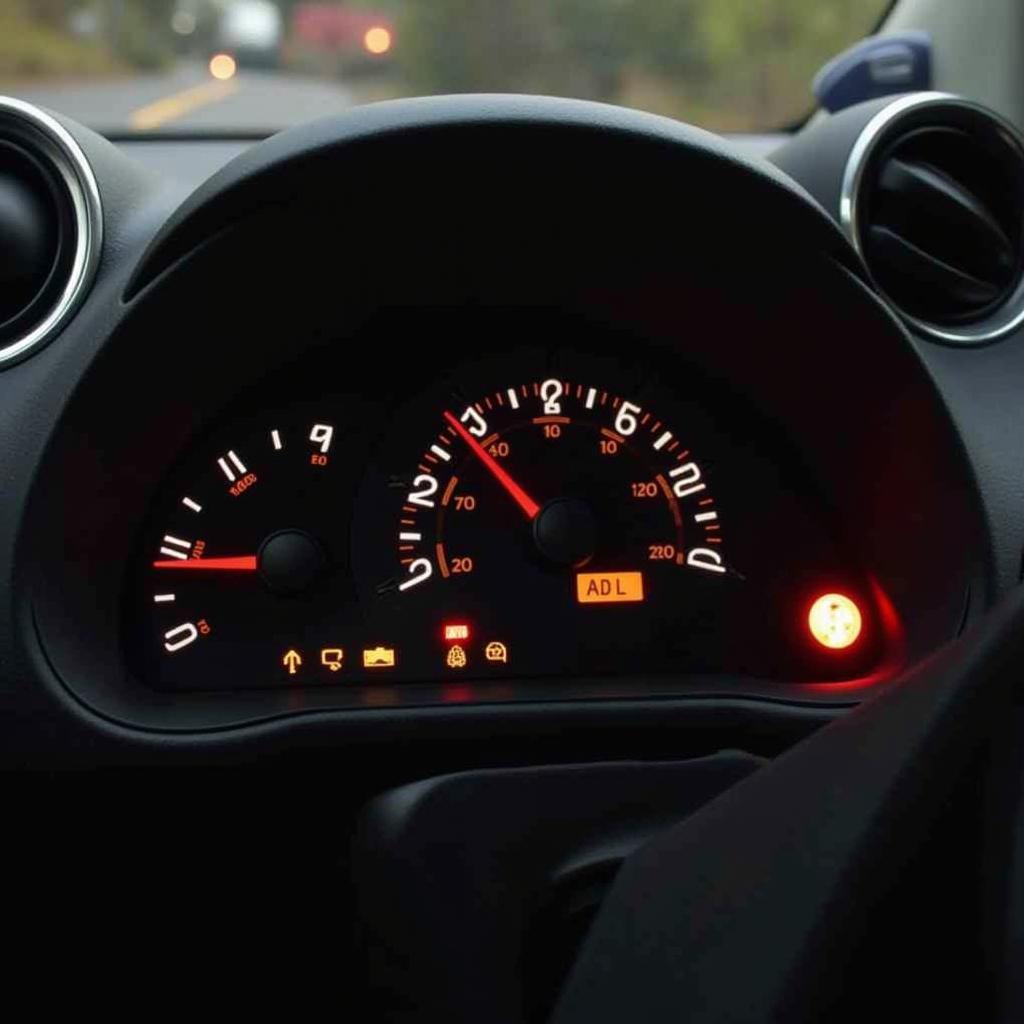This guide delves into the complexities of resetting the AdBlue system on your Volkswagen or Audi vehicle using the VCDS diagnostic tool. We’ll cover the process, troubleshooting common issues, and provide valuable tips to help you get back on the road swiftly.
What is AdBlue and Why Does It Need Resetting?
AdBlue is a urea-based fluid that reduces harmful nitrogen oxides (NOx) emissions from diesel engines. It’s injected into the exhaust system, reacting with NOx to convert it into harmless nitrogen, water, and carbon dioxide.
The AdBlue system needs occasional resetting for a variety of reasons, including:
- Low AdBlue level: When the AdBlue tank runs low, a warning light will illuminate on your dashboard, prompting you to refill the tank.
- Faulty sensor: Sometimes, the AdBlue sensor malfunctions, sending incorrect readings to the engine control unit (ECU). This can trigger a warning light and prevent the system from operating properly.
- Software update: After performing a software update on your vehicle, it may be necessary to reset the AdBlue system to ensure compatibility.
- Regular maintenance: As part of routine maintenance, it’s often recommended to reset the AdBlue system periodically to maintain optimal performance.
Steps to Reset AdBlue Using VCDS
- Connect your VCDS cable: Plug the VCDS cable into your vehicle’s diagnostic port, usually located under the steering wheel.
- Open VCDS software: Launch the VCDS software on your computer and connect to your vehicle.
- Select the appropriate control module: Navigate to the control module responsible for the AdBlue system. This may vary slightly depending on your vehicle’s model year and engine type.
- Locate the AdBlue reset function: Find the specific function within the control module that allows you to reset the AdBlue system. This is typically labeled as “AdBlue Reset,” “AdBlue System Reset,” or something similar.
- Execute the reset command: Follow the onscreen instructions provided by the VCDS software to execute the reset command. This may involve selecting specific options, entering codes, or confirming your action.
Troubleshooting Common Issues During AdBlue Reset
- Error messages: If you encounter error messages during the reset process, it’s important to review the VCDS logs for specific fault codes. This will help you diagnose the issue and determine the next steps.
- Incomplete reset: If the reset process doesn’t complete successfully, double-check your connections and ensure the VCDS software is up to date. If the issue persists, consult a qualified automotive technician for assistance.
- Incorrect AdBlue level readings: If the AdBlue level readings are inaccurate after the reset, it may indicate a problem with the sensor or the AdBlue system itself. You might need to investigate and replace the faulty component.
Expert Opinion:
“It’s crucial to understand the potential consequences of improperly resetting the AdBlue system,” emphasizes [Expert Name], a certified automotive technician with over 15 years of experience. “A faulty reset could trigger further complications, so it’s always best to consult a professional if you’re unsure about the process.”
Tips for Successful AdBlue Reset
- Use genuine VCDS: Always utilize an authentic VCDS cable and software to ensure proper communication and functionality.
- Follow the instructions: Adhere carefully to the instructions provided by the VCDS software to avoid unintended consequences.
- Consult a professional: If you’re not comfortable performing the reset yourself, seek assistance from a qualified automotive technician who is familiar with AdBlue systems.
FAQ
Q1: What is the average AdBlue reset cost?
A1: The cost of resetting the AdBlue system using VCDS varies depending on factors such as labor rates and the complexity of the procedure. You can expect to pay anywhere from $50 to $150.
Q2: Can I reset the AdBlue system manually?
A2: While some vehicles may have a manual reset procedure, it’s generally not recommended. Using VCDS ensures a more accurate and controlled reset process.
Q3: What if I can’t find the AdBlue reset function in VCDS?
A3: If the AdBlue reset function is unavailable in your VCDS software, consult the VCDS documentation for specific instructions or contact a certified VCDS expert.
Q4: How often should I reset the AdBlue system?
A4: The frequency of AdBlue resets varies based on driving habits and mileage. Generally, it’s recommended to reset the system every 6 months or 10,000 miles, whichever comes first.
Q5: What happens if I ignore the AdBlue warning light?
A5: Ignoring the AdBlue warning light can lead to engine performance issues, decreased fuel efficiency, and ultimately, a loss of power or even a complete engine shutdown.
Q6: Is it possible to reset the AdBlue system without VCDS?
A6: While it’s technically possible to reset the AdBlue system without VCDS, it’s not recommended. Using VCDS ensures a more comprehensive and accurate reset.
Q7: Can I use a different diagnostic tool to reset the AdBlue system?
A7: While other diagnostic tools may exist, VCDS remains the most widely used and reliable option for resetting the AdBlue system on Volkswagen and Audi vehicles.
By following these guidelines, you can confidently reset the AdBlue system on your Volkswagen or Audi, ensuring optimal performance and reducing harmful emissions. Remember to always prioritize safety and consult a professional if you’re unsure about any aspect of the process.


